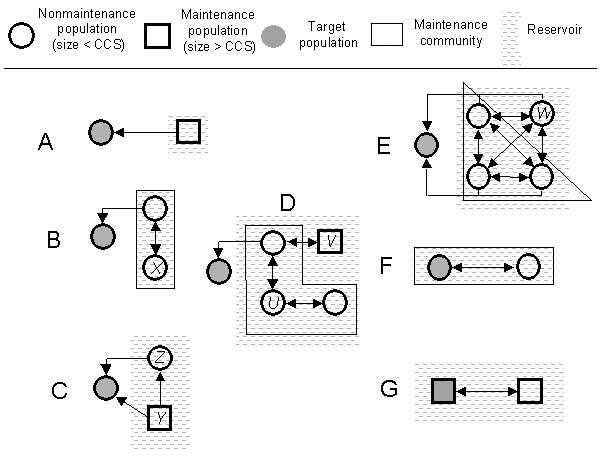Volume 8, Number 12—December 2002
Perspective
Identifying Reservoirs of Infection: A Conceptual and Practical Challenge
Figure 1

Figure 1. . Examples of simple and more complex target-reservoir systems. In the simplest case, A, a maintenance population transmits a pathogen (indicated by arrows) to a target population that is smaller than the critical community size (CCS) and therefore classified as nonmaintenance. In B, the reservoir is composed of two connected nonmaintenance populations, only one of which is the source population, and neither of which could constitute a reservoir alone (typically akin to some vector-borne infections). Elimination of infection in population X will result in elimination of infection in the target. C depicts a situation in which Y is a maintenance population, but transmission can occur directly between Y and the target population or through another source population, Z. Although not essential to pathogen maintenance, Z is still part of the reservoir because it contributes to transmission of the pathogen to the target. In D, four nontarget populations must be included within the reservoir if its full dynamics are to be understood. Elimination of infection in U will not result in elimination of infection in the target, as V is an independent maintenance population. In E, all populations are sources. F illustrates that the target population itself may constitute part of the reservoir and G that the target population can be a maintenance population. If W is not required to maintain the infection, then W falls outside the maintenance community but is still part of the reservoir because it is a source.